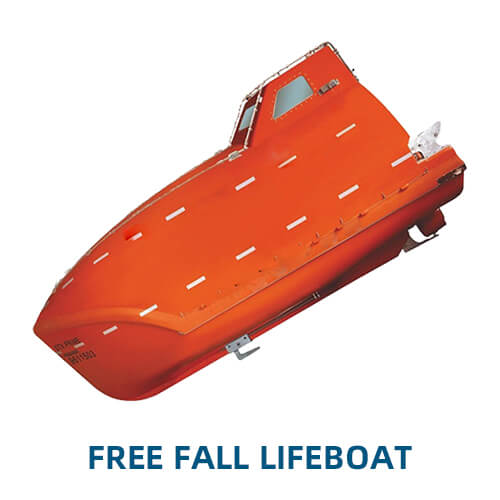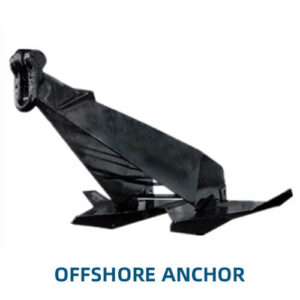Key Features of Free Fall Lifeboats:
- Deployment Mechanism:
- Free Fall Launch: The lifeboat is launched by sliding down a ramp or chute from a height, allowing it to fall freely into the water. This method ensures quick and efficient deployment, even in rough sea conditions.
- Controlled Descent: The descent is controlled to minimize impact with the water. The lifeboat is equipped with shock absorbers or cushions to reduce the impact force during water entry.
- Design and Construction:
- Durable Materials: Constructed from strong, marine-grade materials such as fiberglass or aluminum, designed to withstand harsh maritime conditions.
- Watertight: The lifeboat is designed to be watertight and buoyant, ensuring it remains afloat and functional after deployment.
- Self-Righting: Many free fall lifeboats are equipped with self-righting mechanisms to ensure that the boat returns to an upright position after being launched.
- Safety and Equipment:
- Emergency Equipment: Equipped with essential emergency equipment, including life vests, first aid kits, flares, signaling devices, and emergency rations.
- Communication Systems: Some models include communication devices like radios or satellite phones to maintain contact with rescue teams.
- Safety Features: Includes safety features such as a self-bailing system to remove water from the lifeboat, and a navigation system for emergency steering.
- Performance Characteristics:
- Rapid Deployment: Designed for quick deployment, the free fall lifeboat can be launched within seconds, even in adverse conditions.
- High Capacity: Typically designed to accommodate a large number of passengers, ensuring sufficient capacity for crew and passengers.
- Applications:
- Commercial Shipping: Used on cargo ships, tankers, and passenger vessels to provide a rapid evacuation option in case of emergencies.
- Offshore Platforms: Essential for offshore oil and gas platforms where immediate evacuation is critical due to remote locations and challenging conditions.
- Maintenance and Inspections:
- Regular Inspections: The lifeboat and its launching system should be regularly inspected and maintained to ensure proper functionality and compliance with safety regulations.
- Training: Crew members should be trained in the operation and deployment of the free fall lifeboat to ensure efficient and safe use during emergencies.
- Regulations and Standards:
- International Regulations: Free fall lifeboats must comply with international maritime safety regulations, such as those set by the International Maritime Organization (IMO) and the SOLAS (Safety of Life at Sea) Convention.
- Certification: Lifeboats should be certified by relevant maritime safety authorities to ensure they meet safety and performance standards.
Advantages of Free Fall Lifeboats:
- Speed and Efficiency: Offers rapid deployment, crucial for time-sensitive evacuation situations.
- Space-Saving: Designed to be compact and can be stored in confined spaces, making them suitable for vessels with limited deck space.
- Robust Design: Built to withstand harsh sea conditions and provide reliable performance in emergencies.
Considerations for Free Fall Lifeboats:
- Training Requirements: Requires thorough training for crew members to operate and deploy the lifeboat effectively.
- Maintenance: Regular maintenance and inspections are essential to ensure the lifeboat remains in operational condition.
Free fall lifeboats are a critical safety feature for maritime and offshore operations, providing a rapid and efficient means of evacuation in emergency situations. Their robust design and quick deployment capabilities make them a vital component of emergency preparedness and response plans.






